Posts Tagged landscape design
Flood-Resistant Yard Maintenance Tips For the Rainy Season
Mother Nature can be unpredictable. And if you live in Rohnert Park, your home could be part of 4,813 properties with a 26% risk of flooding. Water rushing through your yard, threatening to wash away all your hard work, and turning your lush oasis into a waterlogged nightmare, becomes a significant concern.
While there’s not much you can do to control the weather, there are steps you can take to ensure your yard is as flood-resistant as possible. Here are practical strategies to fortify your yard against floods, protect your precious plants, maintain proper drainage, and prevent erosion to keep your outdoor space looking its best, even when the water starts rising.
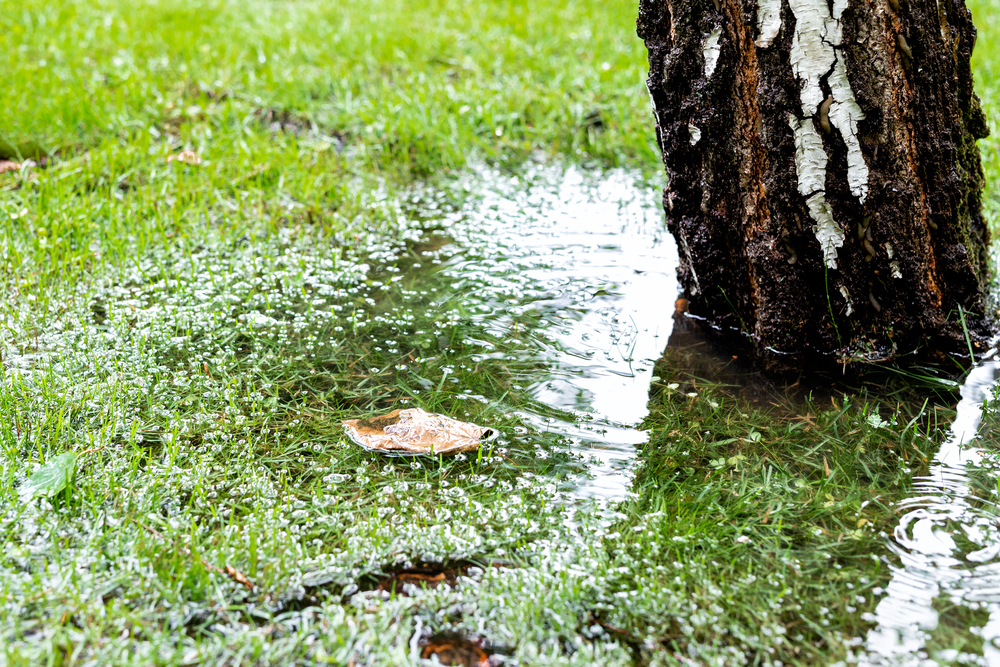
Choose Flood-Resistant Plants for Your Yard
Flood-resistant plants possess unique characteristics that allow them to withstand and thrive in waterlogged conditions, ensuring the resilience of your outdoor space during heavy rainfall or flooding events. Here’s how it works:
- Enhanced drainage: Water-loving grasses like blue grama, willows, cypress, and shrubs like elderberry have well-developed root systems that improve soil structure and drainage. Their extensive root networks act like natural sponges, absorbing excess water and preventing it from pooling on the surface. This reduces water accumulating in your yard, eliminating the potential for flooding.
- Erosion control: Heavy rainfall erodes soil, washing it away, which causes damage to your yard and nearby areas. Plants with deep and fibrous root systems help anchor the soil, preventing erosion while maintaining the integrity of your landscape.
- Water filtration and nutrient retention: Flood-resistant plant root systems act as natural filters, removing pollutants and sediment before the water reaches groundwater sources or nearby water bodies. These plants also absorb excess nutrients, like nitrogen and phosphorus, commonly found in stormwater runoff, effectively preventing water pollution.
When picking vegetation for your yard, opt for species native to Califonia, like buffalo grass. They have evolved and adapted to thrive in the local climate, soil conditions, and rainfall patterns, making them inherently more resilient to natural disasters.
Incorporating native flood-resistant plants further aligns your yard with the surrounding ecosystem, promoting biodiversity. Take advantage of online tools to help you find the most appropriate native species for your specific region in California.
Better Your Drainage System
A qualified yard maintenance rohnert park landscaper can help you improve how water moves and drains within your yard, effectively mitigating the risk of flooding and minimizing potential damage. Landscaping strategies to improve yard drainage include:
- Grading and contouring: Proper grading and contouring direct water towards suitable drainage outlets, such as swales or storm drains. The land should slope away from the center of the yard, guiding water to flow away from vulnerable areas. A skilled landscaper will evaluate the topography, re-level any spots where water pools, and make adjustments to ensure optimal drainage paths.
- Install French drains or catch basins: French drains and catch basins are effective drainage solutions that divert excess water from your yard. French drains consist of perforated pipes covered by gravel, facilitating water absorption. Catch basins, on the other hand, are underground structures that collect surface water and direct it to a suitable outlet. A professional can strategically install these drainage features in areas prone to flooding, preventing water from accumulating and causing damage.
- Gutter and downspout maintenance: Properly functioning gutters and downspouts are vital for effective drainage. A landscaper inspects and cleans your gutters regularly, freeing them from debris that causes blockages. Consider installing downspout extensions to direct water into proper drainage channels, preventing water from running into the yard.
- Rain gardens and bioswales: Rain gardens and bioswales are innovative landscaping techniques that improve drainage while enhancing your yard’s aesthetics. Rain gardens are shallow depressions filled with water-tolerant plants that can absorb and filter water. Bioswales are channels designed to collect and divert water, allowing it to infiltrate the ground gradually. Both features contribute to efficient water management, reducing the risk of flooding.
- Permeable paving: Replace impermeable surfaces, such as concrete or asphalt, with permeable alternatives like gravel, permeable pavers, or porous asphalt. These materials allow water to infiltrate the ground instead of pooling on the surface. Permeable paving also aids in drainage but also helps recharge groundwater resources.
- Add rain barrels: During heavy rains, the barrels capture and store stormwater that would otherwise flow into your yard, contributing to localized flooding. These innovative solutions save water, reduce water bills, promote sustainable gardening, and benefit soil and plant health.
Apply Hardwood Mulch
When applied as a protective layer on the soil surface, hardwood mulch acts as a barrier, preventing rainwater from directly impacting the soil and grass. Instead, water penetrates the soil gradually, promoting better infiltration and reducing runoff.
By improving soil structure, hardwood mulch helps create a more porous and well-drained soil, increasing the yard’s capacity to absorb and retain water during heavy rains. Hardwood mulch is preferred as it lasts longer and resists floating away better than lighter mulches.
Find a Qualified Yard Maintenance Rohnert Park Landscaper
From selecting water-loving plants to improving drainage systems, taking proactive measures is key to creating a flood-resistant yard. To guarantee the best results, seek the assistance of a qualified, credible, and licensed landscaping company. Take action today and partner with professionals to transform your yard into a beautiful, resilient haven that stands strong against the forces of nature.
Get the Best Bushes for Your Low-maintenance Garden
If you’re a busy homeowner, chances are you don’t want to add gardening chores to your overflowing plate. But you can turn your yard into a beautiful landscape bursting with color and life.
Proper planning allows you to create a stunning low-maintenance garden with colorful and evergreen bushes. These are hardy, slow-growing shrubs that require minimum pruning, saving you the hassle of frequent pruning.
Dig in and learn more about the best shrubs for your low-maintenance garden.
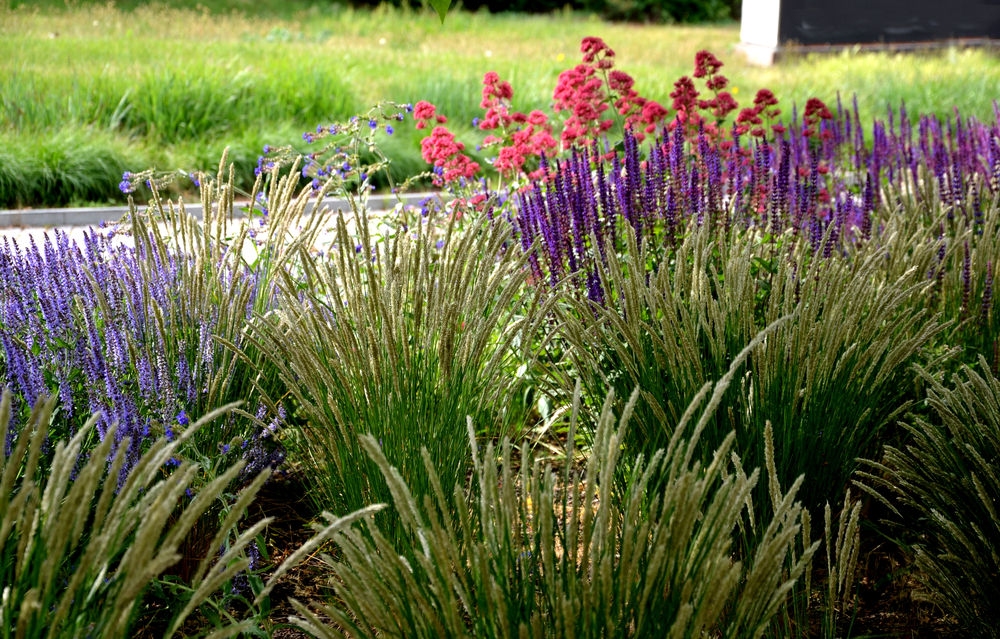
How to Choose the Best Shrubs for Your Home
The key to creating a low-maintenance garden is filling it with shrubbery that never grows out of control or requires constant pruning. It allows for a rewarding gardening experience that doesn’t saddle you with recurring chores.
1. Sunlight
The amount of direct sunlight your yard receives affects the growth vigor. Ideally, plants require at least six hours of direct sunlight to thrive. However, you can still create a lush and colorful yard with beautiful blooms and fabulous foliage if your yard receives 3 to 6 hours of direct sunlight. Insufficient sunlight can lead to stunted growth and weak stems and give your bushes a drab appearance.
Observe your yard on a sunny day and note the light and shade pattern. Creating a detailed light map paints an accurate picture of how much light your yard receives to help you create the perfect garden.
2. Rooting System
Root size is a priority consideration if your garden is near your house. Shrubs with extensive roots can damage your home’s foundation, sidewalk, driveway, or septic system, saddling you with expensive repairs. Shallow roots shrubs such as hydrangea, forsythia, camellia, rhododendron, plantain lilies, and boxwoods are ideal for such gardens.
3. Sunlight Preferences
It may come as a surprise, but shrubs have varying sunlight requirements. Some shrubs thrive in full sun, while others prefer partial or deep shades. Understanding sunlight preferences is crucial to planning your landscape. You can match them with the ideal location to ensure growth and survival and create a blooming garden.
4. Size
Paying attention to the height and spread of your preferred shrubbery helps eliminates landscaping problems. Shrubs fall into three broad categories—small, medium, and large.
- Small shrubs are under 3 feet tall with a spread of 1 to 4 feet.
- Medium shrubs are under 6 feet tall and spread 3 to 6 feet.
- Large shrubs grow up to 20 feet tall with a spread of 6 to 15 feet.
The Best Low Maintenance Bushes for Your Yard
These shrubs will help you create a beautiful, low-effort garden without saddling you with routine gardening chores.
Dwarf Alberta Spruce
Dwarf Alberta Spruce is a compact, evergreen shrub with a distinct pyramidal shape. The leaves are bright, green aromatic needles and are densely packed, giving the dwarf tree a tight, fuzzy look. Dwarf Albert spruce rarely grows above 13 feet and has an astonishingly slow growth rate. It only grows 2 to 4 inches yearly, so it rarely requires pruning and will probably never outgrow its designated space. It thrives in well-drained acidic soils and direct sunlight.
Knock Out Rose
Knock Out Rose is a hard flowering shrub renowned for its beautiful continuous blooms during the growing season. It showcases vibrant flowers in red, pink, and yellow colors. Despite belonging to the rose family, Knock Out Rose is notoriously easy to grow. It’s resistant to pests and diseases and self-cleans—sheds its spent flowers without requiring deadheading. It can grow up to 7 feet tall, thrives in well-drained soils, and requires at least six hours of sunlight daily.
Blue Star Juniper
Blue Star Juniper is a compact slow-growing evergreen shrub with dense, silver-blue foliage. Mature shrubbery is about 3 feet tall with a spread of about 3 feet. They feature awl-shaped needle-like leaves arranged in clusters on tiny stems resembling stars. The unique shape of these slow-growing shrubs adds beauty and appeal to any landscape. Blue Star Juniper is exceptionally hardy, requires little maintenance, and thrives in various soil conditions.
Boxwood
Boxwoods are hardy, evergreen shrubs renowned for their dense foliage, compact growth habit, and landscaping versatility. The growth height depends on the specific variety and pruning style but typically ranges from 1 to 15 feet. Dwarf cultivars tend to stay compact, growing to a maximum height of about 2 feet. Boxwood bushes are slow growing, usually about 12 inches a year, and have spread ranges from 1 to 10 feet. They produce tiny white blooms in spring, thrive in well-drained soils, and grow best in partial or full sun.
Rhododendron
Rhododendrons are a diverse group of shrubs renowned for their showy, colorful flowers. Their growth height depends on the variety and cultivar. Compact and dwarf cultivars are 1 to 3 feet tall, while large rhododendrons are usually 6 to 15 feet tall. Compact shrubs may have a spread of 2 to 4 feet, while large ones can have a spread of 6 to 10 feet. Rhododendrons thrive in coarse, acidic soils and require partial sun exposure.
Create a Thriving Low Maintenance Garden
Shrubs are ideal an ideal choice if looking to create a beautiful, low-maintenance garden. Carefully choosing the shrub varieties can help pepper your landscape with a mix of evergreen and flowering shrubs. Working with an expert service can help you make the best choices and transform your drab yard into a beautiful paradise teeming with life.
Get the best low-maintenance bushes for your garden. Contact us today!
From Fire Pits to Outdoor Lounges: Backyard Ideas for Every Style
Backyards are often overlooked when looking to create a comfortable and inviting home. With the right design and planning, you can make this outdoor space a beautiful extension of your living area. Sprucing your backyard creates the perfect space for relaxing or entertaining and can improve your health and wellbeing. Whether you have a tiny patio or a sprawling lawn, there are plenty of backyard ideas to transform your space into a true oasis.
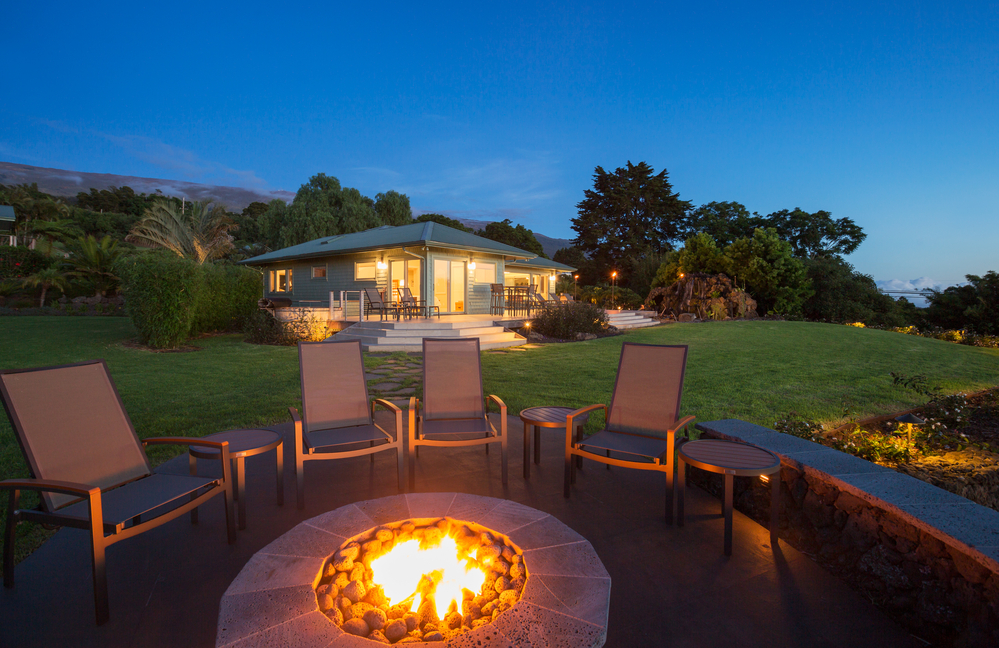
Outdoor Dining Area
An outdoor dining area can help you appreciate the Mediterranean climate in Sonoma County. You can enjoy the warm, sunny weather while sharing a hearty meal outdoors with friends and family.
A careful choice of dining table and chairs allow you to create a functional and inviting outdoor dining area. Teak or metal are ideal choices because they can easily withstand the elements. Incorporating outdoor pillows and cushions adds a splash of color and comfort to the space.
An umbrella or a pergola provides shade and protection from the sun to let you spend more time outdoors during the warmer months. They also add an element of design to the space, giving it a visually interesting and intentional feel.
If the space allows, you can add some greenery and natural beauty to the outdoor dining area by surrounding it with beautiful plants. Succulents, lavender, or rosemary make a great choice. These plants add visual interest, enhance the ambiance, and provide pleasant aromas.
Immersive Garden
Immersive gardens are great backyard ideas that improve curb appeal and uplift your quality of life. These are specially designed gardens that provide a fully immersive and sensory experience.
Immersive gardens go beyond the visual appeal to engage all your five senses, creating a truly unique experience.
Immersive gardens comprise plants, flowers, trees, and other elements carefully chosen for their sensory properties. For instance, jasmine, lavender, or roses stimulate the sense of smell. Ornamental grasses or lamb ears are incorporated for their unique textures.
The sound of running water in water features such as waterfalls, fountains, or ponds adds tranquility. Colorful plants create a visually stimulating environment, while edible herbs and plants engage the sense of taste.
Fire Pit
A fire pit is an excellent choice if you wish to use your outdoor space throughout the year. Installing a fire pit creates a warm, cozy, and inviting atmosphere to gather with family and friends. Since fire pits come in various shapes, sizes, and designs, you must pick one that fits your budget and available space.
Ideally, a fire pit should be placed on a level surface and at least 10 feet away from any structure or combustible materials such as trees or bushes. You can make fire pits from concrete blocks, bricks, or stone. Using a layer of fireproof mortar between the blocks helps increase a fire pit’s lifespan.
Adding a grate lets you whip up a feast over your fire pit and enjoy delicious flame-grilled meals with friends and loved ones.
Outdoor Lounge
An outdoor lounge is a perfect place to relax and unwind after a long day at the office. A cozy outdoor lounge provides the perfect backdrop to enjoy Sonoma County’s beautiful sunsets.
Pick a design that suits your personal style, available space, and intended use. Popular outdoor lounge designs include minimalist, rustic, bohemian, coastal, and Mediterranean.
Be sure to create a comfortable seating area by furnishing the space with outdoor sofas, chairs, and coffee tables. Use outdoor pillows and blankets to add colors and texture and give your outdoor lounge a comfy, inviting look.
A careful choice of plants and trees can add greenery to your outdoor lounge while providing shade and privacy. Rhododendrons, boxwood, holly, and camellia are popular shade garden choices and can provide year-round privacy.
Play Area
A play area is an excellent addition to any backyard for a family with young children. It provides a safe and fun space that encourages your kids to embrace outdoor play, which can drive creativity and improve physical health.
Naturally, the age group of the children is a primary consideration when creating a play area. Your options range from swing sets with multiple swings, slides, and climbing walls to sandboxes and outdoor toys such as trampolines, playhouses, and water tables. Sports equipment such as soccer nets and small basketball hoops are ideal for older kids.
A dedicated outdoor play area is crucial for healthy child development. It promotes imagination and creativity by allowing children to play pretend games by creating imaginary worlds. Games that involve climbing, swinging, running, and jumping enhance motor skills and help children improve balance, agility, and coordination.
Bring Your Backyard Ideas to Life
Thoughtful landscape design can help you transform your backyard ideas into a truly inspiring space that entices you and your loved ones to spend time outdoors. Working with a skilled landscaping service like DK Landscaping gets the job done quickly, professionally, and within your budget.
Our skilled experts can help you make the right choice from the get-go when you need a stunning yet low-maintenance backyard. From landscaping design to installation and maintenance, we can help bring your ideas to life and turn your backyard into a marvelous yet functional work of art. Talk to our landscaping experts today!
7 Reasons Property Owners Rely on Garden Professionals
Using a professional landscape maintenance company is a no-brainer for anyone who doesn’t enjoy yard work but wants their landscape to look its very best.
However, even avid gardeners and those who enjoy working outside find using a professional gardening service makes their life easier and enhances their efforts.
Here are seven reasons why hiring a garden service makes sense – no matter how much you enjoy working outside.
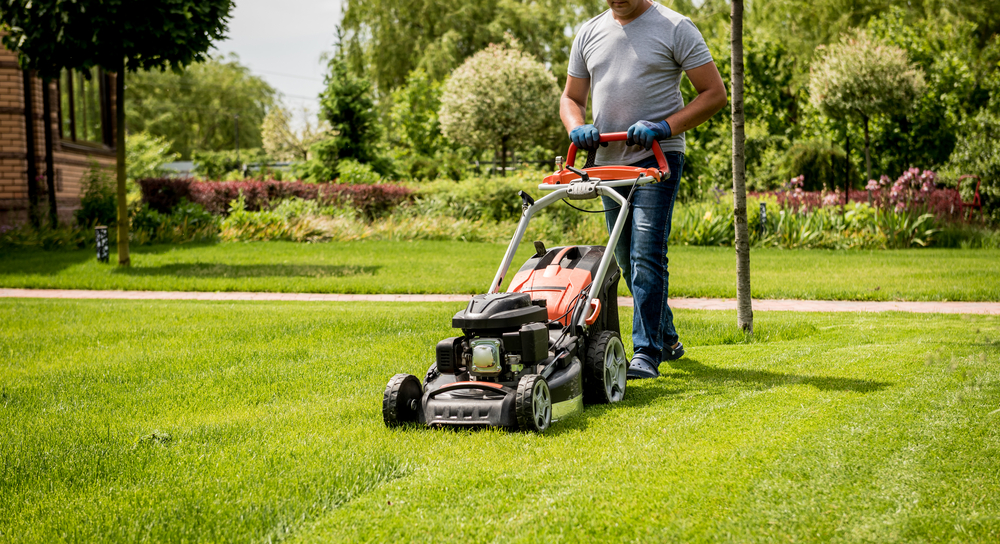
1. Increase year-round interest & curb appeal
Along with the regular yard maintenance routine, garden services include little extras that increase year-round interest and curb appeal. For example, we work with clients to:
- Ensure there’s color and interest during all four seasons.
- Hone in on the trees, shrubs, flowering plants, and grasses that make sense for their property’s microclimate.
- Expand their knowledge of native and non-native landscape options to keep things fresh and interesting.
- Take over the chores they don’t want to do themselves so they can focus on the tasks they enjoy most.
- Learn techniques, tips, or tricks to expand existing knowledge and expertise.
We always enjoy caring for yards and landscapes, but we’re especially inspired by homeowners who love to grow and nurture their landscapes as much as we do.
2. They work in more adverse weather conditions than the average gardener
Sure, working outside is wonderful – all that fresh air and sunshine does a body good. But what about the days that are hotter or cooler than you’d like them to be? Or the days when you feel under the weather yourself?
Your professional landscape maintenance team is there for you (almost) regardless of the weather, so you can stay comfortably tucked inside without worrying about whether the lawns are mowed or the shrubs are pruned.
3. We’re never in over our heads
Just as a foodie’s eyes may be bigger than their stomach, a garden lover’s eyes may be bigger than their available calendar days. A lush, beautiful landscape requires continuous work.
Sometimes that work is a little effort daily or weekly; other times, it requires a significant amount of labor day in and day out.
Garden and landscape professionals do this for a living, so our calendar is integrated with your landscape’s needs. In addition, we’re happy to take on extra tasks when you can’t get around to it, which means you never have to feel guilty about all of the yard work or gardening that isn’t being done – or about the new garden projects you never have time to bring to fruition.
4. You can enjoy cut flowers from your garden
Growing and maintaining a cut flower garden takes a tremendous amount of time, but the results are worth it when you see beautiful bases filled with blooms on your dining/end tables or other prominent surfaces.
Your professional garden crew can work with you to plant and cultivate your favorite flowers or blooms and foliage in your favorite hues. You’ll have beautiful blooms to cut and display whenever you want.
5. Maintain safe and attractive hardscape features
Over time, walkways crack or become uneven. The lighting features may have burned-out bulbs or electrical issues. Water features can plug or wear out, and the fire pit or planter surrounds may need updating. By scheduling weekly or bi-monthly garden service, you can rest assured the entire landscape – including its hardscape features – will be tended to regularly.
Some routine maintenance issues happen automatically, like simple leak repairs or bulb replacements. If and when more significant repairs or renovations are needed, we’ll let you know, provide an estimate and can schedule or perform that work for you.
6. We can redesign or expand your existing landscape
Are you ready to design a new area of your landscape? Is it time to rip out an area of non-native plants and replace them with a more water-wise xeriscape? Would you like to cultivate a garden that attracts more birds and pollinators – or repels the local deer?
All of that is possible when you use a professional garden service. We love working with clients who are inspired to continue the evolution of their landscape and garden environments. We are always there to provide insight, advice, and labor to ensure your landscape spaces serve your household’s current needs – whether that be a kid-safe space to play or an area that can handle the wear and tear of the beloved four-legged members of the family.
7. No need to have a single tool
Professional garden services bring all of the tools and equipment required for the job. That means you don’t have to own or maintain a single tool or garden-specific machine. There’s no need to purchase or store fertilizers or other amendments that keep gardens looking their best. We take care of all that for you, freeing up your garage and storage spaces.
Contact Us To Learn More About Professional Garden Service Options
We tailor garden services to meet customers where they’re at. Contact us to learn more about our service offerings and how we can keep your landscape lush and vibrant all year round.
8 Brilliant Landscape Design Ideas
Upgrading your landscape design is a great way to create an awe-inspiring outdoor space. Whether you want to boost the general beauty of your front yard or create a stunning backyard with a dining area, there are dozens of brilliant and inspiring ideas to implement. That said, here are simple but creative ways to decorate your outdoor space.
Front Yard Landscape Designs
Your front yard makes the first impression when guests visit your property. For this reason, you need to boost your curb appeal, maybe with a stunning walkway or a beautiful lawn decorated using an eco-friendly garden. Here are some welcoming front yard landscaping ideas you can draw inspiration from.
1. Colorful Window Boxes and Floral Border
One of the best ways to revitalize your front yard is to have flowering plants create a colorful border on the entryway. A combination of the pleasant floral border and the appealing window boxes makes this design even better for your front yard. That’s because you get to beautify your entryway and draw attention to the house itself.
With this landscaping idea, you can use a mixture of perennial and annual flowers like petunias and hydrangeas for a pop of color in your front yard. You can also include a few evergreen shrubs like Pieris japonica and Cherry laurel for year-round greenery. This landscape design works in both backyards and front yards.
2. Install Path Lights in Your Front Yard
Installing path lights boosts the night-time beauty of your front yard, and most of them are easy to install. The photo above features jar path lights hanging on hooks and lining a driveway. You can also hang them on fences or set them on table-like structures along pathways.
While path lights decorate your front yard entrances and walkways, spotlights are a great alternative. They beautify your outdoor space by calling attention to specific landscape features. Spotlights have a narrower beam to focus on one thing at a time in your front yard.
3. Raised Flower Bed in the Front Yard
This flower bed in front of your house will make a statement by raising the planting surface above the lawn, which grabs attention to the plants. To create even more impact, have an irregularly shaped bed. For instance, you can go for a curve that contrasts splendidly with the regular lines of the house, just like in the photo above.
4. Leverage a Lamp Post
Installing a lamp post in your front yard adds elegance and function to your home. It improves the looks of your outdoor space and curb appeal. To ensure the lamp post blends seamlessly with other features, add a flower bed beneath it.
Backyard Landscape Designs
Your backyard is an extension of what’s going on inside your house. For this reason, you want it to be a casual, colorful, and fun place to relax and enjoy nature or a mixture of modern-natural experiences. The following landscape design ideas will help you transform your backyard into your favorite outdoor space.
5. Water-Saving Backyard
While you want your backdoor to lead to an admirable beauty, a sustainable backyard helps you save resources and reduce costs. This landscape design eliminates the backyard lawn and replaces it with modern decorative styles.
For example, you can install raised planter boxes for planting herbs and vegetables. You can also have a fire pit, concrete stepping stones, and gravel in the backyard. That way, you get to save water since the landscape design reduces the number of plants in your backyard.
6. Rock Borders
Having a beautiful backyard doesn’t necessarily mean expensive garden supplies and modern decorative structures. Go to the nearest river, beach, or anywhere you can collect various rocks. Then, use them to create a perimeter between your backyard flower bed and lawn. If the color of the stones becomes a concern, you can paint them to complement the surroundings and bring out the beauty you’re looking for. This simple landscaping design creates a pleasant transition between your garden and grass.
7. Plant Flowers Along the Fence
A fenced backyard is private and safe, but it doesn’t always look attractive. Dress your fence with colorful flowers to eliminate the dullness and enliven the atmosphere. Use a border flower garden for popping color and life in your outdoor space.
Hang planters on each fence post to complement the ground garden for an even better result. That way, you’ll create a comfy place to relax and a beautiful backyard that increases the value of your property.
8. Hanging Tree Lights
If you’re looking for a magical vibe in your backyard, incorporate outdoor lights directly with nature. Tree light pendants like those in the above photo are the best way to achieve a heavenly experience in your outdoor space. You can suspend them over tree branches to set the mood for evening garden parties or dinner.
Let a Skilled and Experienced Landscape Designer Transform Your Yard Into Magnificent Beauty
As experienced professionals, we have great landscape design ideas and tools necessary to beautify your front and backyard.
We specialize in maintenance, repair, irrigation, and water-saving landscape designs.
Contact us today for more information.
Small Backyard Ideas for a Magical Outdoor Space
Well-designed outdoor spaces can increase your enjoyment of your home. But what if you have a small backyard? Well, the good news is you don’t need a sprawling estate to transform your backyard into an outdoor oasis. Thoughtful landscape design can transform your small patio or yard into a refreshing outdoor space.
Transform Your Home with these Small Backyard Ideas
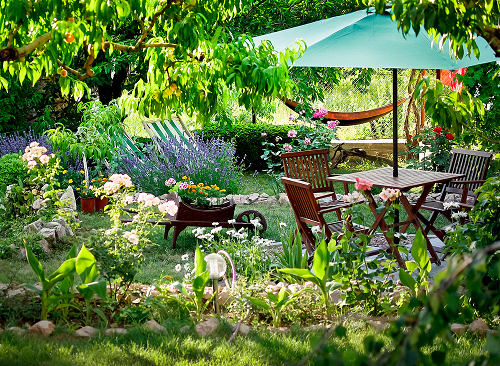
Whether you live in an apartment, townhouse loft, or a house with minimal outdoor space, you can carve out an outdoor space for yourself. Yes, even modest balconies and rooftop terraces count. Even a small yard can feel grand if you design it the right way.
Here are some small backyard ideas that can help you maximize the little space you have.
1. Create a Container Garden
You may not have the space or time to become a master gardener, but you can learn to create striking container gardens. When you lack good soil, containers allow you to make the ideal conditions for your plants to thrive.
All you need is a planter, some potting soil, and the plants of your choice. From hanging baskets to window boxes, you can embellish your backyard with bold foliage for a refreshing space your friends and family will love.
2. Think About Vertical Space
Vertical gardens, or living walls, are ideal features for small spaces. Think of the magnificent living tapestries that ornament public gardens and some buildings. You can bring the same beauty and vitality into your home using vine-covered trellises, closely planted fruit trees, and decorating your walls with hanging plants.
Reinvigorating your exterior with a living wall brings your backyard to life, attracting songbirds and pollinators, and can help temper the summer heat. Living walls also act as art, establish boundaries within a landscape, give you a sense of privacy, and obscure undesirable views.
3. Create a Focal Point
Focal points are used in landscape design to draw and direct the eye. If your backyard consists of a swath of plants or is crammed with furniture, your eyes will sweep along the area, not knowing where to land.
If your backyard is filled with plants and feels more like a garden, you can use a statue or a small fountain to detract some attention from the plants. You can also strategically place furniture to draw in the eyes. Conversely, if your space is adorned with furniture, you can use a large plant as a focal point.
4. Use Every Inch – Even the Side Yard
The side yard is often overlooked and can easily become a sad spot adorned with nothing but unsightly air-conditioning units. You can perk up your side yard by adding a stepping-stone path or install a welcoming entry gate if your space allows.
Another way is to draw the eyes up, away from the sides, using arbors, hanging vines, or strategic overhead lighting.
5. Embrace a Multi-Level Landscape Design
Breaking up your yard with steps, decks, retaining walls, or terraces can create the illusion of a larger backyard. A multi-level design helps to break things up visually, and you can help you separate the different functionalities of your yard.
You can have a dining patio on the upper level and incorporate different greenery into the lower levels.
6. Create a No-fuss Patio or Deck
Don’t have a green thumb? Not to worry. You can set up a murphy bar or an al fresco dining room on a bed of gravel, and voila! You added a little polish to your backyard. Add some statement chairs to create a laid-back or rustic atmosphere depending on the vibe you’re going for. And don’t forget to add some hanging lights to elevate the mood at night.
The idea here is to create a warm, welcoming space that doesn’t require you to get your hands dirty.
7. A Small Kitchen and Dining Area
Love to grill? You don’t necessarily need a large space for this. You can create an outdoor cooking center. All you need is a little space for a basic grill, counter, and a small dining area. You can even add to the ambiance by adding a fireplace or a small garden.
For your family, this could mean growing herbs in the garden, cooking dinner outdoors on the weekends, and enjoying evenings by the fire.
8. Maximize on Available Space
When you have a small backyard, it’s best to create a multifunctional space. You can invest in some portable furniture that you can keep in your basement or garage when not in use. Or, you can create seating benches that also double as storage spaces for lawn games and plants.
Better yet, you can build a mini storage shed that’s cute yet functional.
Revitalize Your Backyard
Looking for small backyard ideas that make a statement? DK Landscaping can help you create the backyard of your dreams. We are a full-service maintenance company with the tools and expertise to help you create a flourishing landscape.
Contact us today! The solution to your lawn and garden woes lies with us.
A Xeriscape Guide to Cold-Winter Gardening
Xeric plants thrive on any climate and can flourish on extreme temperatures, extra water, dry conditions, low light, or lots of light. Xeriscaping is one of the best ways of planning an economically and ecologically sound garden. Xeriscape winter gardening can be rock-filled, lush, and can also feature different types of fauna.
The Winter Gardening Challenges
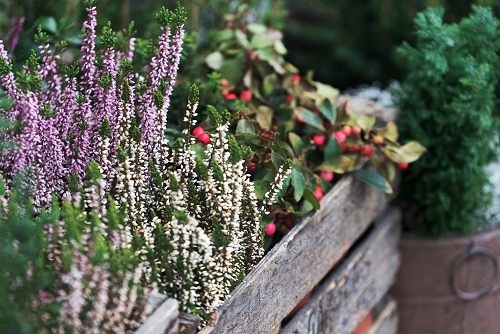
Winter temperatures can cause stress to plants. During winter, there are less angled rays and diminished sun exposure. Rainfall is also limited, meaning that regular irrigation may be needed. The soil type, wind exposure, and the slope must be considered before selecting winter gardening plants. Winter is open to elements such as extreme cold and dryness.
The temperatures may also get to the freezing level. Tender plants need to be located to sheltered locations to keep them from the winds and dryness. Be careful to watch out on slopes. These are of particular concern given that they face moisture runs and winds, which could then create dry conditions. The arrival of winter does not mean that your xeriscape garden cannot thrive.
Go Native
Native plants are adapted to the local weather conditions and soil. They do not require much water and can survive in harsh conditions. These plants support bees, birds, and other wildlife by offering shelter and food. Native flora also protects your yard from wildfires.
Hydrozone
Select water-wise plants during winter, and group them wisely. The same way you would cater to beds based on the plants’ particular needs for sunlight should be the same logic used for water usage.
Plants that need lots of water need to be grouped together. The same applies to native perennials. When selecting your plants, look for those that can keep moisture trapped inside for longer. These are plants with thick leaves and fine hairs.
Maintain Proper Drainage
Xeric plants thrive most in rocky environments, meaning they don’t tolerate too much rain. These plants should be planted in soils with organic matter and little clay. They should also be planted on raised mounds for better water drainage. Instead of raking leaves, use them to mulch the ground. This is an organic layer that encourages nutrients to penetrate the ground leading to a lusher yard.
Xeriscaping is an excellent winter gardening that eliminates the need for supplemental water. It varies from natural landscaping due to the emphasis on the selection of plants that conserve water. For all your xeriscape landscape maintenance needs, call us today or contact us online.
Rock Garden – It’s More Than What Meets the Eye
Contrary to popular opinion, there is more to a rock garden than a garden filled with rocks. In reality, it is a blend of plants and rocks complimenting each other.
Unlike easterners, mainly Japanese who use rock gardens to find enlightenment, we in the west are more focused on creating beautiful spaces that are a pleasure to look at and relaxing.
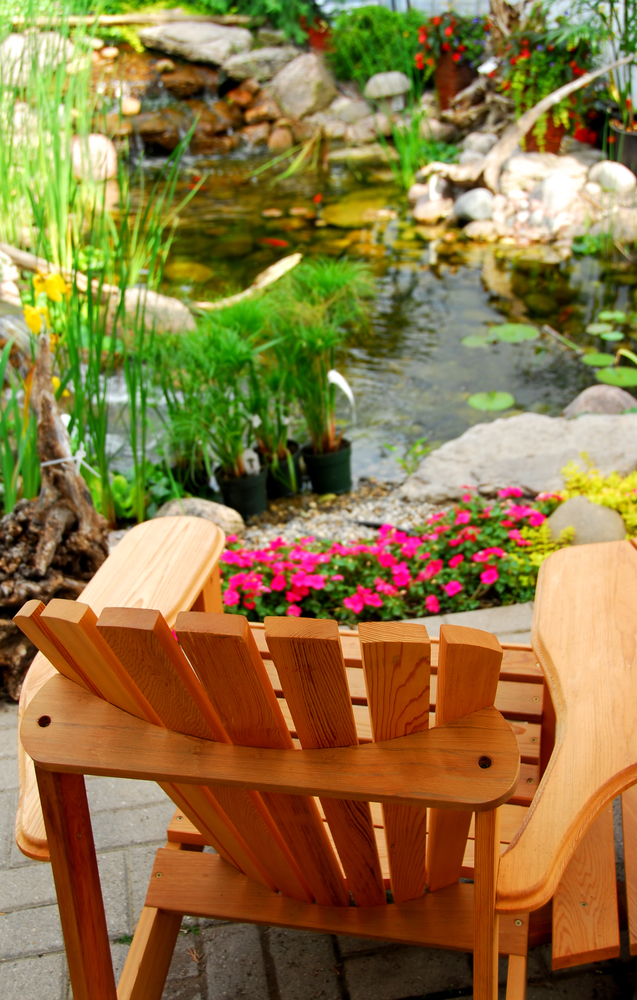
Before we get into how you can use the rocks, here are some few benefits of having a rock garden.
- First, these gardens can survive harsh climate. You can throw anything at them from extreme winters to sweltering heat, and they will endure. Strong winds or droughts will no longer be a concern.
- They are low maintenance. Unlike customary gardens, these are easy to maintain as they don’t require frequent feeding, watering, mowing, aeration, or control of pests. Moreover, the rocks can be placed around the plants to control weeds reducing the need for chemical control. They are ideal for people who lead busy lives.
- Also known as Zen gardens, you will appreciate that they look great all year round. However, you should use a combination of plants that bloom in spring and summer together with evergreens and fall foliage.
- Rocks allow you to create depth and diversity by combining tiny pebbles with large boulders.
- Rocks also create the illusion that your yard is large. Seeing as you use fewer plants than traditional yards, you create the perception that your yard is extensive.
How you can use rocks around the garden
You can use different stones to create a specific impact depending on what you want.
First, if you are looking for ambiance or a casual, laid-back garden, an area you can sit and relax; we recommend beach pebbles or river rocks. These add warmth, are pretty inviting, and are customizable seeing as they are available in various sizes and colors.
You can also use rocks to control weeds. Place them around your plants and flower beds, and fill up those empty spaces between plants as mulch.
You can use white marble chips to create a cheerful and bright space. They are especially useful in shady areas as their bright color will contrast with the dark soil and general ambiance there. You can also use dark marbles to balance out a bright area.
A rock garden will come in handy if you have a steep slope or uneven surface. Some of these spaces are difficult to mow and maintain. However, you can use rocks to transform it into a showcase of more delicate plants.
You can also use stones to create a border around your ponds. They are great for camouflaging the liners and creating contrast with the water for a dynamic look.
Conclusion
Rock gardening can give you a sense of sophistication and class. It is rare but beautiful, and the rocks and greenery compliment each other superbly.
However, it takes expertise to create a terrific rock garden. There is a ton of technical knowledge and experience required, and we encourage you to hire professional landscapers. You can contact us to book an appointment for garden maintenance, irrigation, water saving landscape design, and rock gardens. Contact us for more information.
Backyard Ideas: 5 Easy Tips for Creating a Beautiful Drought-Resistant Back Yard
Earlier this year California made permanent the water restrictions that had been in place throughout the drought. While many people re-landscaped their front yards during the dry years, many more let their back yard lawns wither away, or removed them completely. But efficient, non-wasteful irrigation doesn’t mean you can’t enjoy a beautiful back yard retreat.
Xeriscaping, or water-wise, climate appropriate gardening, can allow you to have all the color, blooms, and lushness you desire while significantly reducing water use and maintenance. Try one or more of these 5 backyard ideas that are ideal for the dry summers and wet winter Mediterranean climate of Sonoma County.
Low-maintenance backyard ideas
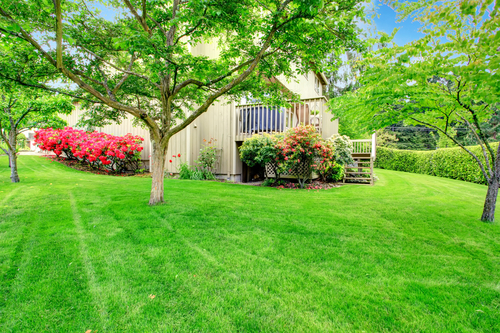
Landscaping your back yard with waterwise techniques is not only environmentally friendly, it can be downright gorgeous. Here’s how.
Native plants
Always a good choice for xeriscape principles, climate-appropriate plantings are those that are suited to your local water availability. Here in Sonoma, good native choices include
- Perennials like lavender, rosemary, Santa Barbara daisy, Mexican sage, verbena, catmint, and dusty miller.
- Annuals and bulbs that are well-adapted to drought-tolerant gardens. Think daffodils, irises, California poppies, larkspur, and alyssum.
- Vines that include climbers like wisteria, honeysuckle, grape, and potato vine.
- Drought-tolerant grasses such as fountain, blue oat, blue fescue, sedge, and deer grass.
- Aloe, agave, echeverias, and sedums are good succulent choices that cover a wide spectrum of the green palette.
Groundcovers
Groundcovers are a great replacement for lawns, help to prevent soil erosion, and add a lovely splash of color. Is your Sonoma back yard mostly sunny? Rockrose is a hardy choice that requires almost no care. More shade than sun? Try creeping barberry. It’s bright yellow flowers in mid spring and blue berries in early summer make this a real show-stopper.
Don’t forget the mulch. It helps to moderate soil temperature, curtail evaporative water loss, and keep the weeds out of sight. The most common mulches are chipped or shredded bark, but gravel and stone can also be used.
Hardscape
There’s nothing more low-maintenance than hardscape. Paved areas, retaining walls, and stone and brick pathways create a clean minimalist look that can be enhanced and added to depending on what style back yard you prefer. Try a walkway of pea gravel with stepping stones that leads from the deck to the garden. A stone patio or composite deck are ideal for backyard barbecues.
Decorative stone
Use a mix of different gravels throughout the backyard landscape for more visual appeal. Decorative stone like river rock comes in many different sizes, shapes, and colors. Together with decomposed granite, it’s a great choice for surrounding a water feature or filling a raised or flat bed.
Create multiple outdoor living spaces
A nice balance of plantings and outdoor living areas lets you extend your home’s footprint while having less grassy areas to maintain. Even less expansive back yards can have several smaller areas that offer lots of options for entertaining. One area can feature the grill, another the bar setup, and another can hold seating and dining options.
Just keep in mind that regular maintenance isn’t eliminated by xeriscaping. Fertilizing, pruning, and occasional weeding are all still required. Irrigation systems should be tested and adjusted according to the season. And pest management is a core practice of xeriscape ideology.
Learn More
If you’d rather spend less time taking care of your back yard and more time relaxing in it, or just want some more terrific backyard ideas for your own home, contact us today. We’d love to show you all the ways a water-smart backyard can be a beautiful one, too.
Front Yard Flower Bed Ideas – DK Landscaping
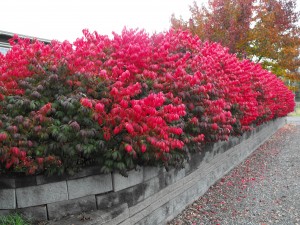 Want to make your home look calm, inviting, and happy? Add flower beds to your property for constant color. Use the beds to delineate property or break up bland expanses of lawn grass and dirt. Finding flower bed ideas is simple, but you should be sure of what you need and why. There are so many possible flower bed ideas that you can get easily bogged down in details if you start to look for designs without taking issues like drought and level of care into consideration. Pinpoint non-negotiable issues like those first to make designing your front yard a lot more efficient.
Want to make your home look calm, inviting, and happy? Add flower beds to your property for constant color. Use the beds to delineate property or break up bland expanses of lawn grass and dirt. Finding flower bed ideas is simple, but you should be sure of what you need and why. There are so many possible flower bed ideas that you can get easily bogged down in details if you start to look for designs without taking issues like drought and level of care into consideration. Pinpoint non-negotiable issues like those first to make designing your front yard a lot more efficient.
Drought-Proof Flower Bed Ideas
Drought is probably going to be one of your main considerations when looking at flower bed ideas. Many areas of the country are experiencing water shortages, and anything you plant has to be able to deal with a lack of abundant water. That doesn’t mean you have to plant cacti — just look for cultivars of flowers that have been bred to be less water-needy. Native flowers are always a wonderful choice in this case as they are already somewhat adapted to their region’s fluctuating water supplies. Plant breeders have been working on drought- and disease-resistant cultivars of all sorts of plants for years, and it’s become easier to find these in garden centers and from landscaping companies when looking at flower bed ideas.
Easy Care Flower Bed Ideas
Ease of care is another big consideration for flower bed ideas. Even if you have a landscaping company taking care of most of your garden, you’ll still have to do some minor care yourself. If you don’t feel up to that, you’ll want flower varieties that can handle benign neglect. Again, native flowers tend to be a little better for this, though there are easy-care species from all over the country if you’d like more variety for your flower bed ideas.
Location Ideas For Your Flower Bed
Now take a look at location to further refine your flower bed ideas. Flower beds that will be near the street need to be able to handle road salt spray, for example, if your area tends to have occasional snowfall in spring or fall. That’s not so much of a problem with annuals, as you’d be removing them anyway, but if can be for perennial or biennial flowers.
Flower bed ideas for spaces near fences can have species of varying heights, so those plants nearer the fence should be taller. The shorter flowers near the edge of the bed may need to be shade-tolerant if the bed is positioned where the fence or taller plants might block a lot of the sunlight.
Reduce Insects
Flowers planted next to the house need to be pest-resistant if possible. While it is impossible to guarantee that a flower will never attract a bug, if you have flowers that tend to attract pests, those pests could get into your house. Ask your garden center or landscaping company to show you flowers that have a reputation for repelling insects, too, such as marigolds, petunias, and nasturtiums. As you come up with ideas for other areas of your yard, you can work a few of these plants in so that you can reduce the number of pests you have to deal with overall. Start talking to landscape design companies about flower bed ideas and species that fit what you need for your yard’s environment, and you’ll have a beautiful yard in no time.





